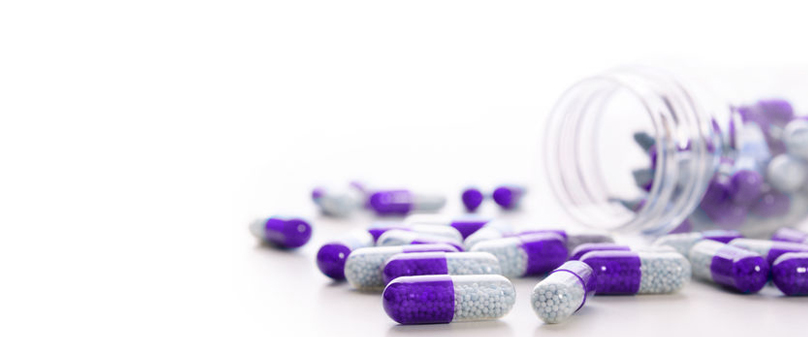
The Government’s R&D tax credit scheme for medical or pharmaceutical companies
If you are a medical or pharmaceutical company working in the pharma supply chain, then it’s well worth your time to know about the government’s R&D tax credit scheme, which can give you up to 33% back on a broad – and often surprising – array of R&D related expenditure.
Contents:
- Introduction to medical and pharma R&D
- What qualifies as R&D
- Examples of qualifying activities
- UK grants for pharma and medical
- Identifying R&D activities
- Why many companies fail to claim
- Where to get help
Introduction to medical and pharma R&D
One of the biggest Research & Development (R&D) activities around the world relates to the development of new medical and pharmaceutical products; from the drugs and wellness products that we buy over the counter to tackle minor complaints and to keep us healthy, through to cutting-edge treatments that are delivered by hospitals and medical research centres of excellence. The costs involved in developing new drugs can be huge, primarily because of the highly regulated and prolonged processes of clinical testing that must be adhered to in order to gain authorisation from the relevant governing agency to retail the end product. However, despite these vast costs of UK pharma R&D spend and the qualifying nature of most R&D activity, many of the companies throughout the supply and development chain of medical and pharmaceutical products are not yet claiming relief that is made available to them from the government.
What are UK R&D Tax Credits?
Quite simply, the government recognises the costs involved in developing innovative new products of any kind – including pharmaceutical products – and it also sees the benefit in supporting UK businesses to develop new findings and products in these fields in order to grow Britain’s economy and global standing. Consequently, it offers R&D tax credit claims and pharma grants to partially offset the costs of this R&D activity. When companies carry out qualifying R&D activity but do not claim medical R&D tax credit, they lose out on what is effectively free cash, which could be used to fund further research and development activity. The value of an R&D tax credit can be up to 33 per cent back on the spend, making it highly worthwhile as a scheme.
What is the definition of R&D in the context of medical and pharma industry tax credits?
Research and development tax credits apply when a project or programme of work seeks to further knowledge of science or technology within the field. This occurs through systematic attempts to resolve uncertainty and to create an innovative solution to a problem. The definition of R&D doesn’t just apply to products either – it also applies to devices, materials, services and processes. Interestingly, it also applies to instances where existing products or services can be significantly improved.
As long as the advance has been made in the field of science and/or technology, and that the boundaries of knowledge have been pushed forwards in order to achieve that advance, the activity is very likely to count as R&D for medical and pharma tax credit purposes.
What qualifies as R&D for medical and pharmaceutical tax credits?
When it comes to qualifying for an R&D tax credit medical and pharmaceutical research and development activities are defined by the government. Most pharma companies will intuitively know that the development of new drugs or medical products is likely to be eligible for a pharmaceutical R D tax credit; however, not as many know that other situations can also count too, for example:
– The development of manufacturing processes for a new drug could be considered eligible for R&D tax relief medical applications.
– The adaptation or re-engineering of a manufacturing process for new drug development.
– The development of new methodologies and techniques for drug testing could also be eligible for medical R&D tax credit pharma applications, even if the company delivering those tests hasn’t been involved in the drug development directly. This is particularly interesting and means that manufacturers who are innovating in the field of production, specialist drug testing companies and manufacturers and suppliers of specialist medical equipment could also find that their business activities qualify for medical R&D tax credits.
Examples of qualifying R&D activities
It’s important to know that the medical and pharma sector is always evolving and innovating in new ways. Sometimes these innovations are driven by commercial efficiency objectives – to launch drugs to market at a more affordable price. Sometimes they are to meet the demands of changing legislation, and other times they are to tackle a specific disease or condition in a new and more effective way.
Whatever the driver behind this innovation, the government’s pharmaceutical research and development tax credit scheme means that entities throughout the development supply chain can benefit from tax credits that help to offset the cost of their R&D. Here are some specific examples:
Drug discovery
The most obvious – the development of the physical drug or treatment itself in terms of chemical composition and formulation, stability, and so forth. This will include laboratory research and chemical research work, which may be carried out by a range of companies in the supply chain. An example is the creation of a new drug that will help to reduce hot flushes in menopausal women [http://www.imperial.ac.uk/news/185248/new-class-menopause-drugs-reduces-severity/.]
Development of devices:
Development of new devices that help to deliver drug treatments in a better way – for example, that remove the need for surgical application, which deliver non-painful injections or which deliver an existing drug in a new way – such as an oral dose to replace a former vaccine-based dose. The new CardioMEMS heart failure monitoring system device by Abbott helped to slash heart failure cases by 37 per cent in trials. [https://www.sjm.com/en/sjm/cardiomems?alert=DeepLinkSoftAlert&clset=af584191-45c9-4201-8740-5409f4cf8bdd%3ab20716c1-c2a6-4e4c-844b-d0dd6899eb3a]
Drug manufacture itself – with optimised processes for better outcomes
For example, Innomech [http://www.innomech.co.uk/] develops automation systems to produce pharmaceuticals in faster, more reliable ways that reduce the need for human intervention, which improve quality outcomes and which cut costs of production.
Innovative clinical trials
The delivery of formal clinical trials – which may include research for innovation in this field. For example, some clinical trials are looking at app development to secure diverse volunteers and improve the accuracy of the test results through the usage of a more representative population sample. LillyPad are just one innovative company bringing digital transformation to the pharma industry in this way. [https://lillypad.lilly.com/entry.php?e=7121]
Product improvement – including optimisation of the manufacturing process
This can include the improvement of older drugs, to make them more cost-effective, fit for market or generally more ‘on-brand’ for discerning consumers. Here’s one example: the antibiotic amoxicillin was designed to have a pink bubble-gum flavour to make it palatable to small children and to overcome the naturally bitter taste of penicillin. [https://www.theatlantic.com/health/archive/2017/07/the-tastiest-medicine/533937/]
Development of anti-counterfeit drug measures
Innovation in this field has included the use of blockchain enabled digital platforms to ensure counterfeit drugs are weeded out. [https://farmatrust.io/ and https://usethebitcoin.com/farmatrust-review-facing-fake-drugs-blockchain-technology/]
Adaptation of existing drugs to broaden their audience
An example here is where drug formulations may be adjusted to be gluten-free, sugar-free or suitable for vegetarians. For example, Calpol introduced a sugar-free version of its infant painkiller in response to market demand. [https://www.calpol.co.uk/what-is-calpol].
Find out more at: https://rndtax.co.uk/sectors/medical/
Which UK grants are available for pharma and medical industries?
As well as R&D tax credits for the pharma industry, there are some grants that are available, although these are looking less certain as the Brexit negotiations continue and will need to be clarified as part of the UK’s departure from the EU. These grants are often offered by private organisations, such as Celegne [http://www.celgene.co.uk/partnerships/grants/], Roche [https://www.roche.co.uk/home/corporate-responsibility/grants-and-donations.html] and Bristol Myers Squibb [http://www.b-ms.co.uk/responsibility/Pages/GGCSS.aspx]. However, the decision about whether or not to apply for a grant will depend on a variety of factors, including the effect on any R&D tax credit claims, which are determined by whether the company is applying for credits as an SME or large company.
SME treatment
What is vital in the meantime is for medical and pharma supply chain SMEs to be clear on which grants are funded by State Aid and which are funded by other sources. The reason is that, if any project receives State Aid, then it cannot be eligible for an R&D claim under the SME regime, no matter how small it is. Where other types of grant and subsidiary are being claimed for, SME tax relief can be claimed for eligible costs which have not been subsidised. A claim may still be made under the large company R&D regime.
Large company treatment
The large company R&D tax relief scheme which is called R&D Expenditure Credits (“RDEC”) places no restriction on accompanying or additional grant funding. This means that any spend which cannot be included in an SME claim could still be eligible – at a lower relief limit – within a large company claim.
The practical implications for medical and pharma businesses here are that it is essential to carefully assess the potential benefits of any project grant against the cash benefits offered by an R&D tax credit application. This can be a complex area due to the nature of the calculations involved to make an objective decision, but we can assist you with this work as part of our medical R&D tax credits service.
Identifying current R&D activities vs past achievements
Companies applying for pharmaceutical research and development tax credits have two years after their accounting period concludes to submit a claim for all expenditure that qualifies under the scheme for that period. This timeframe exists because the credits sit within Corporate Tax relief for accounting purposes, and there is usually a 24-month deadline for amending any Corporation Tax return after the accounting period ends.
In terms of identifying existing and former R&D activities, this can be a complex business, especially if detailed records haven’t been kept in the past. However, our team understands what HMRC wants to see in this regard and can help to identify and analyse records from varied internal sources to create a solid claim that will maximise your chances of obtaining the full potential tax credit sum.
Why do so many drug and medical companies fail to apply for R&D tax credits?
When it comes to R&D tax credits medical companies often don’t realise that the eligibility criteria extends beyond the development of a successful drug that is taken to market. For example, these are all instances where a company can claim an R&D tax credit:
– Where the company has made a loss
– Where the outcome of the R&D has been sold to another entity
– Where subcontractors were used to deliver an element of the R&D project
– Where the attempt to create a suitable product or solution turned out to be unsuccessful.
Find out more at: https://rndtax.co.uk/sectors/pharma/
How R&D Tax Solutions can help pharma companies to successfully apply for medical R&D tax credits
R&D Tax Solutions exists purely to help companies to access R&D tax credits and to maximise their eligibility under the scheme. We know that healthcare and pharmaceutical companies across the entire development supply chain are currently failing to access the cash benefits that the government makes available to them, either because they simply don’t know that they exist or because they have neither the time nor specialist in-house resource to navigate the ins and outs of the tax credit scheme. Where R&D activity is eligible, up to 33 per cent of the cost of that activity can be claimed back.
Our team of experts work with every client carefully to understand their business and to identify the areas of their operation and supply chain R&D activity which could be eligible for a claim under the scheme. This often includes numerous areas which are of surprise to our clients – including subcontracted R&D, loss-making R&D and even unsuccessful R&D! Because we have the in-depth knowledge required to analyse your business R&D spend and to identify all eligible costs, our clients can continue with their own core business work – medical and pharmaceutical product development – and we take the hard work of preparing and submitting a claim off their hands.
The tax relief under the government’s R&D tax credit scheme can be significant for the pharma industry. Get a sense of the potential benefits that await by using our interactive online r&d tax calculator.
Keen to learn more about how we can help you to benefit from this generous government tax credit scheme? Contact us today





